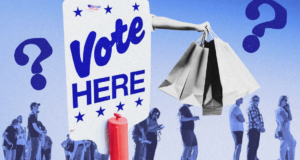
China’s growing consumer frugality has led to yet another quarter of sluggish earnings for some global brands, but turbocharged growth for their local rivals.
A day after L’Oréal SA posted disappointing quarterly sales that suggested China was a major drag on earnings, Hangzhou-based Proya Cosmetics Co. Thursday reported a 21 percent jump in sales and profit during the three months ended September.
The Chinese company’s performance shows that its relatively affordable products and online-focused marketing are working in a market where premium brands are experiencing a decline in sales. L’Oréal’s like-for-like sales in North Asia, which includes China, fell 6.5 percent during the quarter, with chief executive officer Nicolas Hieronimus attributing the poor showing to consumer pessimism.
The persistent slump isn’t limited to cosmetics makers. Luxury giant LVMH Moët Hennessy Louis Vuitton SE reported its worst quarter since the pandemic, whereas Starbucks Corp. has continued to lose market share to local rivals such as Luckin Coffee, and Cotti Coffee that offers a cup of Americano for as low as $1.4.
Even the usual favorites like Nike Inc. and Uniqlo are seeing sales stumble amid a broad consumer switch to cheaper alternatives, or “pingti” in Mandarin.
“Local brands are winning” the competition, said Ernan Cui, China consumer analyst at Gavekal Dragonomics. “Consumers have become more sensitive to prices and are in pursuit of better value for money products amid a weak economic growth.”
Chinese budget retailer Miniso Group Holding Ltd. is expected to report yet another quarter of double-digit growth, according to analyst estimates compiled by Bloomberg. At the same time, Luckin’s revenue growth in the third quarter is estimated by analysts to stay largely the same from the previous quarter’s level of over 30 percent.
Sales on China’s biggest e-commerce platforms under Alibaba Group Holding Ltd. are also stacking up against the global big brands. with L’Oréal, Estée Lauder Cos., Procter & Gamble Co.’s SK-II and Shiseido Co. seeing a 35 percent – 50 percent decline in the 12 months through September, according to data from Hangzhou Zhiyi Tech. On the other hand, Proya and other local labels such as Kans and Giant Biogene Holding Co.-owned Comfy reported more than 20 percent sales growth in the same period.
L’Oréal’s China market deterioration “shows challenging demand particularly in the off season and increasing competition from domestic brands,” Citigroup analysts including Tiffany Feng wrote in a note earlier this week. The company’s premium beauty segment suffered the most from cautious consumer spending.
A Citi note earlier showed there was no improvement in luxury goods consumption during the week-long Golden Week holiday early this month after the recent macro polity stimulus in China that contributed to a short-term rally in luxury stocks.
By Bloomberg News
Learn more:
Economic headwinds, high prices and a lack of novel design are all weighing on what was previously fashion’s most dynamic segment. How severe is the slowdown and how long will it last?




